Oceania Subregions and Independent Countries
Oceania is the collective name for four Pacific Ocean regions, namely: Australasia, Melanesia, Micronesia and Polynesia. Each region is made up of different countries and islands that belong to those countries or belong to countries outside the area. It can be quite confusing but if you get a solid overview of the four regions of Oceania first, then you can move on to expand your knowledge of the many different countries and cultures that exist in Oceania.
AUSTRALASIA: Australia and New Zealand are the two countries that make up Australasia. They are governed by a Governor General who represents the ruling monarch of the United Kingdom, and by a Prime Minister. Australia and New Zealand are both member states of the Commonwealth of Nations and the United Nations.
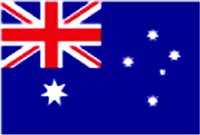 Australia is both a continent (that’s geography) and a country (that’s political). It is the world’s smallest continent. At the same time, it is the 6th largest country in the world. The area of the Australian mainland is 7,591,608 km (2,931,136.2 sq mi). In 2022, an estimated 25 million people lived there. It’s five mainland states are: New South Wales (NSW), Queensland (QLD), South Australia (SA), , Victoria (VIC) and Western Australia (WA). Tasmania is Australia’s 6th state, its largest island and also its smallest state. Tasmania’s area is 90,758 km (35,042 sq mi). About a half million people live there and about 40% live in and around Hobart, the capital city. The Australian Capital Territory (ACT), the Northern Territory (NT), and the Jervis Bay Territory (JBT) are the three mainland territories
Australia is both a continent (that’s geography) and a country (that’s political). It is the world’s smallest continent. At the same time, it is the 6th largest country in the world. The area of the Australian mainland is 7,591,608 km (2,931,136.2 sq mi). In 2022, an estimated 25 million people lived there. It’s five mainland states are: New South Wales (NSW), Queensland (QLD), South Australia (SA), , Victoria (VIC) and Western Australia (WA). Tasmania is Australia’s 6th state, its largest island and also its smallest state. Tasmania’s area is 90,758 km (35,042 sq mi). About a half million people live there and about 40% live in and around Hobart, the capital city. The Australian Capital Territory (ACT), the Northern Territory (NT), and the Jervis Bay Territory (JBT) are the three mainland territories
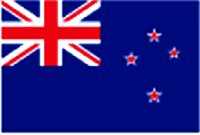 New Zealand occupies two main islands (the North Island and the South Island), and over 600 smaller islands. The majority of New Zealand’s population lives on the North Island in its two largest cities: Auckland and Wellington (the capital city). The third largest city is Christchurch on the South Island.
New Zealand occupies two main islands (the North Island and the South Island), and over 600 smaller islands. The majority of New Zealand’s population lives on the North Island in its two largest cities: Auckland and Wellington (the capital city). The third largest city is Christchurch on the South Island.
MELANESIA: This South Pacific subregion includes the island of New Guinea, which is split between Indonesia and Papua New Guinea. The Indonesian provinces of Papua and West Papua are geographically part of Melanesia; politically, they are part of Asia. Melanesia has four independent nations.
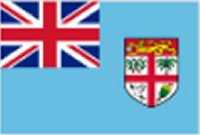 Fiji lies approximately 2,000 km (1,300 mi) northeast of New Zealand. Fiji is actually an archipelago made up of over 220 uninhabited islands and about 110 that are permanently inhabited. The two major islands of Fiji are Viti Levu and Vanua Levu. About 883,483 Fijians (87% of the total population) reside on those two islands. The capital city of Suva is located on the southeast coast of the island of Viti Levu.
Fiji lies approximately 2,000 km (1,300 mi) northeast of New Zealand. Fiji is actually an archipelago made up of over 220 uninhabited islands and about 110 that are permanently inhabited. The two major islands of Fiji are Viti Levu and Vanua Levu. About 883,483 Fijians (87% of the total population) reside on those two islands. The capital city of Suva is located on the southeast coast of the island of Viti Levu.
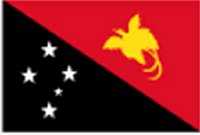 Papua New Guinea (or PNG) is situated on the eastern half of the island of New Guinea and its offshore islands including New Ireland, New Britain and Bougainville. Its capital is Port Moresby. With an area of 462,840 km (178,700 sq mi), Papua New Guinea is the third largest island country in the world. It is also believed to be the world’s most rural country. Only 13.25% of its estimated 8 million people live in urban areas.
Papua New Guinea (or PNG) is situated on the eastern half of the island of New Guinea and its offshore islands including New Ireland, New Britain and Bougainville. Its capital is Port Moresby. With an area of 462,840 km (178,700 sq mi), Papua New Guinea is the third largest island country in the world. It is also believed to be the world’s most rural country. Only 13.25% of its estimated 8 million people live in urban areas.
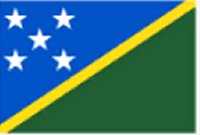 The Solomon Islands are a Melanesian archipelago of 992 tropical islands and atolls. The 6 largest islands in order of size are:
The Solomon Islands are a Melanesian archipelago of 992 tropical islands and atolls. The 6 largest islands in order of size are:
· Guadalcanal (5,302 sq km / 2,047 sq mi); est. population 161,197 (2021). Over 50% resides in Honiara, capital city of the Solomon Islands;
· Malaita (4,307 sq km / 1,663 sq mi), est. population 161,832 (2021);
· Makira aka San Cristobal (3,190 sq km / 1,230 sq mi), est. population 55,000 (2020);
· Santa Isabel (2,999 sq km / 1,158 sq mi); est. population 35,000 (2020);
· New Georgia (2,037 sq km / 786 sq mi), est. population 19,000 (1999); and
· Choiseul (2,971 sq km / 1,147 sq mi), est. population 37,000 (2020).
 Vanuatu is an archipelago, lying west of Fiji and southeast of the Solomon Islands. Vanuatu consists of about 83 fairly small islands, 2 of which belong to France as part of New Caledonia. 65 islands are inhabited but only 14 have a surface area of more than 100 sq km (39 sq mi). The largest towns are Port Vila, Vanuatu’s capital, located on the third smallest island, Efate; and Luganville on Espiritu Santo, the nation’s largest island. Vanuatu’s 14 main islands are (in order of size): Espiritu Santo, Malakula, Efate, Erromango, Ambrym, Tanna, Pentecost, Epi, Ambae or Aoba, Gaua, Vanua Lava, Maewo, Malo and Aneityum or Anatom.
Vanuatu is an archipelago, lying west of Fiji and southeast of the Solomon Islands. Vanuatu consists of about 83 fairly small islands, 2 of which belong to France as part of New Caledonia. 65 islands are inhabited but only 14 have a surface area of more than 100 sq km (39 sq mi). The largest towns are Port Vila, Vanuatu’s capital, located on the third smallest island, Efate; and Luganville on Espiritu Santo, the nation’s largest island. Vanuatu’s 14 main islands are (in order of size): Espiritu Santo, Malakula, Efate, Erromango, Ambrym, Tanna, Pentecost, Epi, Ambae or Aoba, Gaua, Vanua Lava, Maewo, Malo and Aneityum or Anatom.
MICRONESIA consists of some 2000 small islands. There are four main archipelagos: the Caroline Islands, the Gilbert Islands, the Mariana Islands, and the Marshall Islands.
 The Federated States of Micronesia (FSM) consists of four island states where approximately 110,000 people live. The 2,700 km (1,678 mi) long island chain lies approximately 100 miles north of the equator. The four states are: Chuuk (Truk), Kosrae (Kosaie), Pohnpei (Ponape) and Yap. The capital of the Federated States of Micronesia is Palikir which is on Pohnpei, its largest island.
The Federated States of Micronesia (FSM) consists of four island states where approximately 110,000 people live. The 2,700 km (1,678 mi) long island chain lies approximately 100 miles north of the equator. The four states are: Chuuk (Truk), Kosrae (Kosaie), Pohnpei (Ponape) and Yap. The capital of the Federated States of Micronesia is Palikir which is on Pohnpei, its largest island.
 Palau is a tiny country occupying approximately 395.06 sq km (152.52 sq mi) of the Caroline Islands. Its population in 2018 was 18,200 (rounded off). Most residents live in the city of Koror, on the island of the same name. Ngerulmud, the nation’s capital, is located on the nearby island of Babeldaob.
Palau is a tiny country occupying approximately 395.06 sq km (152.52 sq mi) of the Caroline Islands. Its population in 2018 was 18,200 (rounded off). Most residents live in the city of Koror, on the island of the same name. Ngerulmud, the nation’s capital, is located on the nearby island of Babeldaob.
 Kiribati’s land area is scattered across Melanesia, Micronesia and Polynesia, more specifically: the island of Banaba between Nauru and the Gilbert Islands; 16 atolls in the Gilbert Islands; 16 atolls in the Line and Phoenix Islands. The total land area is 811 sq km (313 sq mi). The 2020 population was estimated at 119,000, with about half of that number living on the Tarawa atoll. South Tarawa is the national capital. Fascinating fact: Kiribati is the only country in the world that lies in all four hemispheres.
Kiribati’s land area is scattered across Melanesia, Micronesia and Polynesia, more specifically: the island of Banaba between Nauru and the Gilbert Islands; 16 atolls in the Gilbert Islands; 16 atolls in the Line and Phoenix Islands. The total land area is 811 sq km (313 sq mi). The 2020 population was estimated at 119,000, with about half of that number living on the Tarawa atoll. South Tarawa is the national capital. Fascinating fact: Kiribati is the only country in the world that lies in all four hemispheres.
 Nauru (formerly Pleasant Island), is the world’s smallest island country. With an area of 21 sq km (8.1 sq mi), only Vatican City and Monaco are smaller in area, making Nauru the third smallest country in the world. In 2020, Nauru’s population was an estimated 10,800 is the world’s second-smallest (not including colonies or overseas territories), after Vatican City. Yaren is often listed as the capital of Nauru. However, the country does not have an official capital city. Its government offices are located in the Yaren District.
Nauru (formerly Pleasant Island), is the world’s smallest island country. With an area of 21 sq km (8.1 sq mi), only Vatican City and Monaco are smaller in area, making Nauru the third smallest country in the world. In 2020, Nauru’s population was an estimated 10,800 is the world’s second-smallest (not including colonies or overseas territories), after Vatican City. Yaren is often listed as the capital of Nauru. However, the country does not have an official capital city. Its government offices are located in the Yaren District.
 The Marshall Islands is a sovereign nation spread out over five islands and 29 coral atolls. The largest atolls are: Kwajalein (6.18 sq mi), Majuro (3.75 sq mi), Rongelap (3.09 sq mi), Bikini (2.32 sq mi), Enewetak (2.26 sq mi) and Utirik (0.94 sq mi). Roughly half of all Marshall Islanders live on the Majuro atoll. Majuro is also the name of the capital and largest city of the Marshall Islands.
The Marshall Islands is a sovereign nation spread out over five islands and 29 coral atolls. The largest atolls are: Kwajalein (6.18 sq mi), Majuro (3.75 sq mi), Rongelap (3.09 sq mi), Bikini (2.32 sq mi), Enewetak (2.26 sq mi) and Utirik (0.94 sq mi). Roughly half of all Marshall Islanders live on the Majuro atoll. Majuro is also the name of the capital and largest city of the Marshall Islands.
The Mariana Islands consist of Guam and the Northern Mariana Islands. They both belong to the United States.
Wake Island sovereignty is contested: it is claimed both by the United States and by the Republic of the Marshall Islands. The United States has actual possession of Wake Island, which is under the immediate administration of the United States Air Force.
POLYNESIA consists of more than 1,000 islands in the central and southern Pacific Ocean. The area is usually represented on a map by a triangle. The triangle sides go from Hawaii to New Zealand to Easter Island. The other main island groups inside the Polynesian Triangle are Samoa, Tonga, the Cook Islands, Tuvalu, Tokelau, Niue, Wallis and Futuna and French Polynesia. However, the focus of this section is the independent countries within the triangle. So we are going to look at Samoa, Tonga and Tuvalu. New Zealand was already covered in Australasia and the Hawaiian Islands are part of the United States.
 Samoa is made up of two main islands, namely Savai’i and Upolu. Samoa’s estimated population in 2020 was roughly 202,000 and about three-quarters of its people reside on Upolu, including some 40,000 who resident in Apia, the capital city. The rest of the population resides on Savai’i and two smaller islands, Manono and Apolima.
Samoa is made up of two main islands, namely Savai’i and Upolu. Samoa’s estimated population in 2020 was roughly 202,000 and about three-quarters of its people reside on Upolu, including some 40,000 who resident in Apia, the capital city. The rest of the population resides on Savai’i and two smaller islands, Manono and Apolima.
 Tonga is a constitutional monarchy, officially the Kingdom of Tonga. Thirty-six of its 169 islands are inhabited. Tongatapu is the main island and 70% of Tonga’s population lives there, mainly in and around the capital city of Nukuʻalofa. The total population of Tonga in 2021 was estimated at 104,500 (rounded off) so that would be about 73,000 living on Tongatapu’s 260 sq km (100 sq mi). Vava’u is the second largest inhabited area (37 sq mi). About 15,000 people reside on one large island surrounded by 40 smaller islands. Vava’u has its own capital city, Neiafu. Eua is the third largest island with an area of 87.44 km sq mi (33.776 sq mi). The population is around 5,000. Eua is notable as one of two islands with a stream. It drains to Nafanua Harbor in Ohonua, Eua’s capital city.
Tonga is a constitutional monarchy, officially the Kingdom of Tonga. Thirty-six of its 169 islands are inhabited. Tongatapu is the main island and 70% of Tonga’s population lives there, mainly in and around the capital city of Nukuʻalofa. The total population of Tonga in 2021 was estimated at 104,500 (rounded off) so that would be about 73,000 living on Tongatapu’s 260 sq km (100 sq mi). Vava’u is the second largest inhabited area (37 sq mi). About 15,000 people reside on one large island surrounded by 40 smaller islands. Vava’u has its own capital city, Neiafu. Eua is the third largest island with an area of 87.44 km sq mi (33.776 sq mi). The population is around 5,000. Eua is notable as one of two islands with a stream. It drains to Nafanua Harbor in Ohonua, Eua’s capital city.
 Tuvalu is made up of three reef islands (Nanumanga, Niutao and Niulakita) and six atolls (Funafuti, Nanumea, Nui, Nukufetau, Nukulaelae and Vaitupu) with a total land area of 26 sq km (10 sq mi). Funafuti is the largesst atoll and the nation’s capital. An estimated 6,300 people live on Funafuti, or approximately 60% of Tuvalu’s entire population of some 12,000. From 1819 until 1976, the islands were known as the Ellice Islands, named after a British politician and merchant. On New Year’s Day in 1976 the Ellice Islands officially became the British colony of Tuvalu, and in October 1978, Tuvalu became an independent nation.
Tuvalu is made up of three reef islands (Nanumanga, Niutao and Niulakita) and six atolls (Funafuti, Nanumea, Nui, Nukufetau, Nukulaelae and Vaitupu) with a total land area of 26 sq km (10 sq mi). Funafuti is the largesst atoll and the nation’s capital. An estimated 6,300 people live on Funafuti, or approximately 60% of Tuvalu’s entire population of some 12,000. From 1819 until 1976, the islands were known as the Ellice Islands, named after a British politician and merchant. On New Year’s Day in 1976 the Ellice Islands officially became the British colony of Tuvalu, and in October 1978, Tuvalu became an independent nation.
WHAT DO THESE NATIONS HAVE IN COMMON?
• English is a defacto language: Australia, New Zealand,
• English is an official language: Fiji, Kiribati, Marshall Islands, Micronesia, Nauru, Palau, Papua New Guinea, Samoa, Solomon Islands, Tonga, Tuvalu, Vanuatu
• Commonwealth of Nations members: Australia, Fiji, Kiribati, Nauru, New Zealand, Papua New Guinea, Samoa, Solomon Islands, Tonga, Tuvalu, Vanuatu
• United Nations members: Australia, Fiji, Kiribati, Marshall Islands, Micronesia, Nauru, New Zealand, Palau, Papua New Guinea, Samoa, Solomon Islands, Tonga, Tuvalu, Vanuatu
We may earn a small commission from qualifying purchases made from Amazon.com links at no cost to our visitors. Learn more: Affiliate Disclosure.

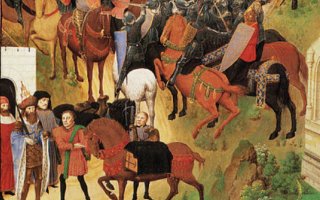







Recent Comments